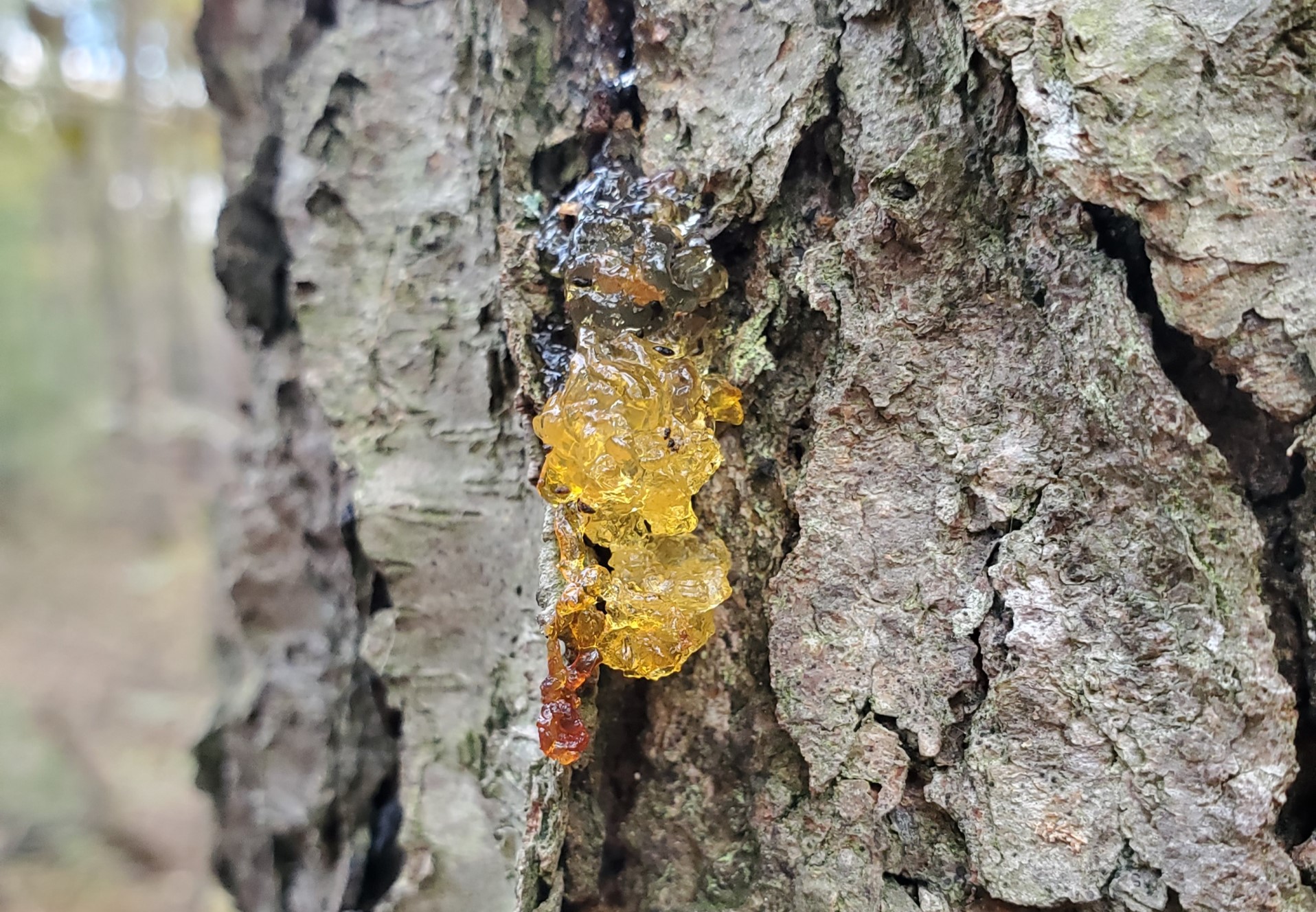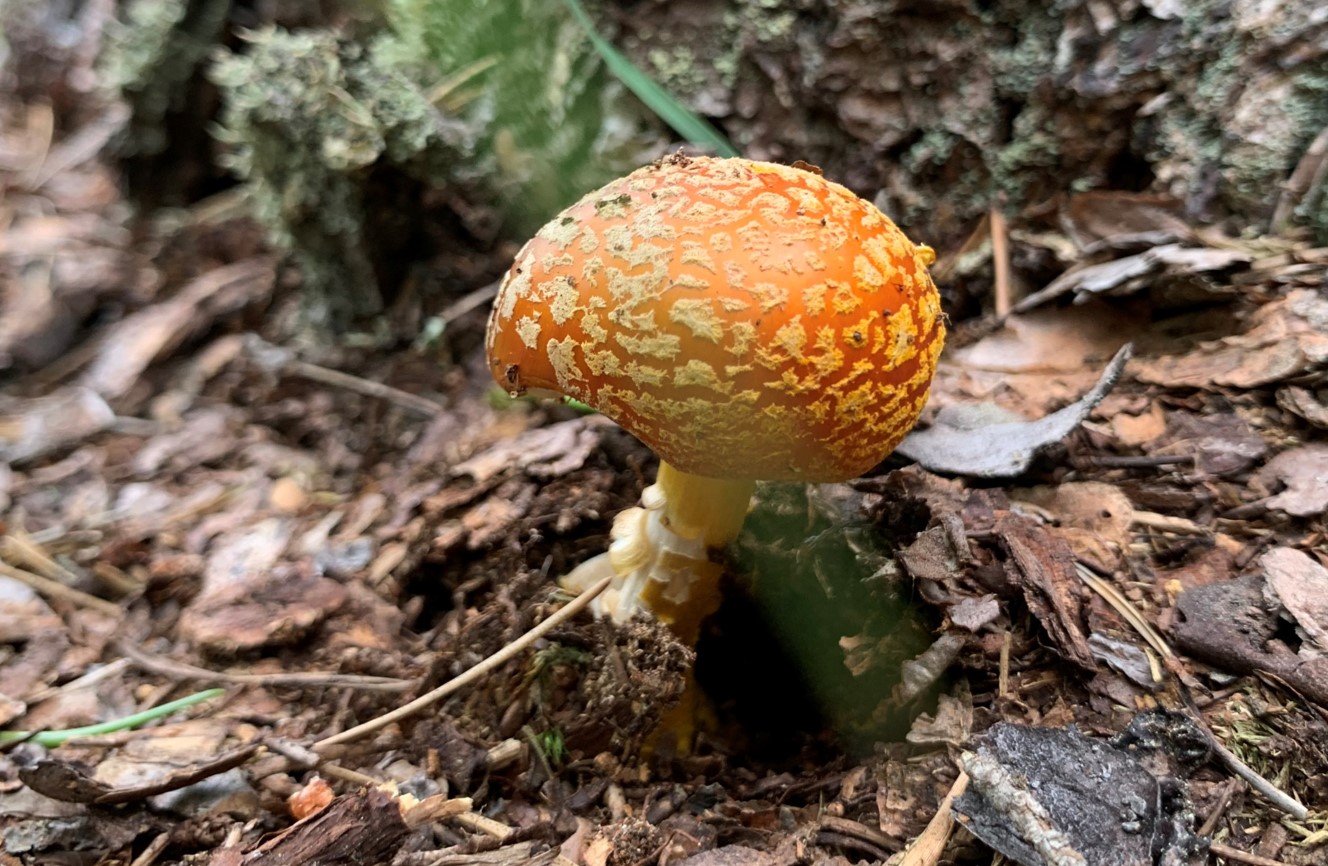Today’s blog was written by Jessica Stillman, school outreach coordinator at Bronte Creek Provincial Park.
When you visit a provincial park, you will likely interact with staff from several departments.
From the gate staff who greet you to the maintenance crew that keep facilities clean, the park operates smoothly because everyone has a role to play in keeping the machine operational.
But there is one team who works so quietly that many of us don’t realize we are witnessing their efforts every day.
That team is the Ontario Parks F.B.I. unit, otherwise known as fungi, bacteria, and invertebrates.
Meet the F.B.I.
Together, this special group are called the “decomposers.”
They work together to break down things such as leaves, branches, and other debris as they feed.
This incredibly important and secretive team has an important role in keeping our parks and natural spaces clean.
Let’s learn more about each member’s unique abilities and secret powers.
Fungi: sometimes showy, usually secretive
As part of our Secret Service, fungi do a great job of hiding in plain sight. That is until, of course, they start to grow mushrooms.
These colourful reproductive structures give away a fungus’ location, but not its secret tool for disposing of unwanted materials. You see, it’s the mycelium (plural: mycelia) of a fungus that is doing the hard work of cleaning up the forest.
Mycelia are webs of tiny filaments (hyphae) that grow into or around a fungus’ food source. They secrete enzymes that break down the food externally, and then the mycelia can absorb these digested nutrients.
Fungi break down materials that many other living things cannot. This makes them an integral part of the F.B.I.
Bacteria: small but mighty
Bacteria are even more secretive than fungi. Their small size makes them impossible to see without the right tool: a microscope.
Even though we can’t see these team members, we know their work is underway throughout our parks.

While bacteria break down organic matter in a similar way to fungi, they have an extra tool up their sleeves. Some bacteria can continue to decompose material in anaerobic conditions.
What are anaerobic conditions, you ask? If oxygen below ground is used up by fungi and other organisms, their decomposing activity stops.
Anaerobic conditions are where no oxygen exists. Some bacteria can live in these conditions and continue their jobs of recycling materials.
Invertebrates: the ones who get things going
Invertebrates like ants, termites, nematodes, millipedes, and beetles are the most obvious division of the F.B.I team.

Invertebrate decomposers don’t worry about staying hidden; they are proud of the work they do.
These small-but-mighty decomposers do the heavy lifting at the start of the decomposition process. They begin by breaking down material into smaller more manageable pieces for the rest of the team to work on.
Even more importantly, invertebrates help to aerate the soil. While fungi and bacteria are doing most of the leg work taking those fragmented pieces and breaking them down into nutrients, they often need oxygen.

By aerating the soil, invertebrates are helping their teammates complete the job at hand.
The F.B.I. motto: “A clean park is a beautiful park!”
By helping organic materials decay, decomposers are recycling nutrients back into the soil. This enriches it, helping new plants to grow and old ones to stay alive.
Nutrients like nitrogen, calcium, and phosphorus are crucial for plant growth. Without the F.B.I. team, these nutrients would remain locked in dead matter on the ground.
Think about what makes your favourite park beautiful.
Is it a majestic White Pine tree stretching to the sky? A blanket of White Trilliums covering the forest floor? The sweet aroma of a sassafras tree along the edge of a trail?
None of these things would be possible without the F.B.I. unit recycling nutrients from dead organic matter into the soil.
Our parks are beautiful thanks to fungi, bacteria, and invertebrates, and they don’t even take any credit for it.
Give decomposers their due
Think about the hard work our F.B.I. team puts into keeping our parks clean and beautiful for us.
Next time you visit a provincial park, do your part to be an honourary member:
- Don’t litter. The F.B.I. team works on organic matter, not plastic!
- Don’t pick mushrooms, as they are how fungi reproduce.
- Leave leaf litter alone. Our F.B.I. team is hard at work inside that leaf litter, and raking or burning it will disrupt their work!
- Dish soap and shampoo don’t help our F.B.I. team to clean up. Remember to dispose of your grey water from washing dishes and showering in designated locations.
We can’t let this Secret Service stay a secret any longer! Their importance to our parks must be made known.
Help us spread the word about this division of Ontario Parks, and do your part to help the F.B.I. team.
Even though you might not see them, our F.B.I. team salutes you!




